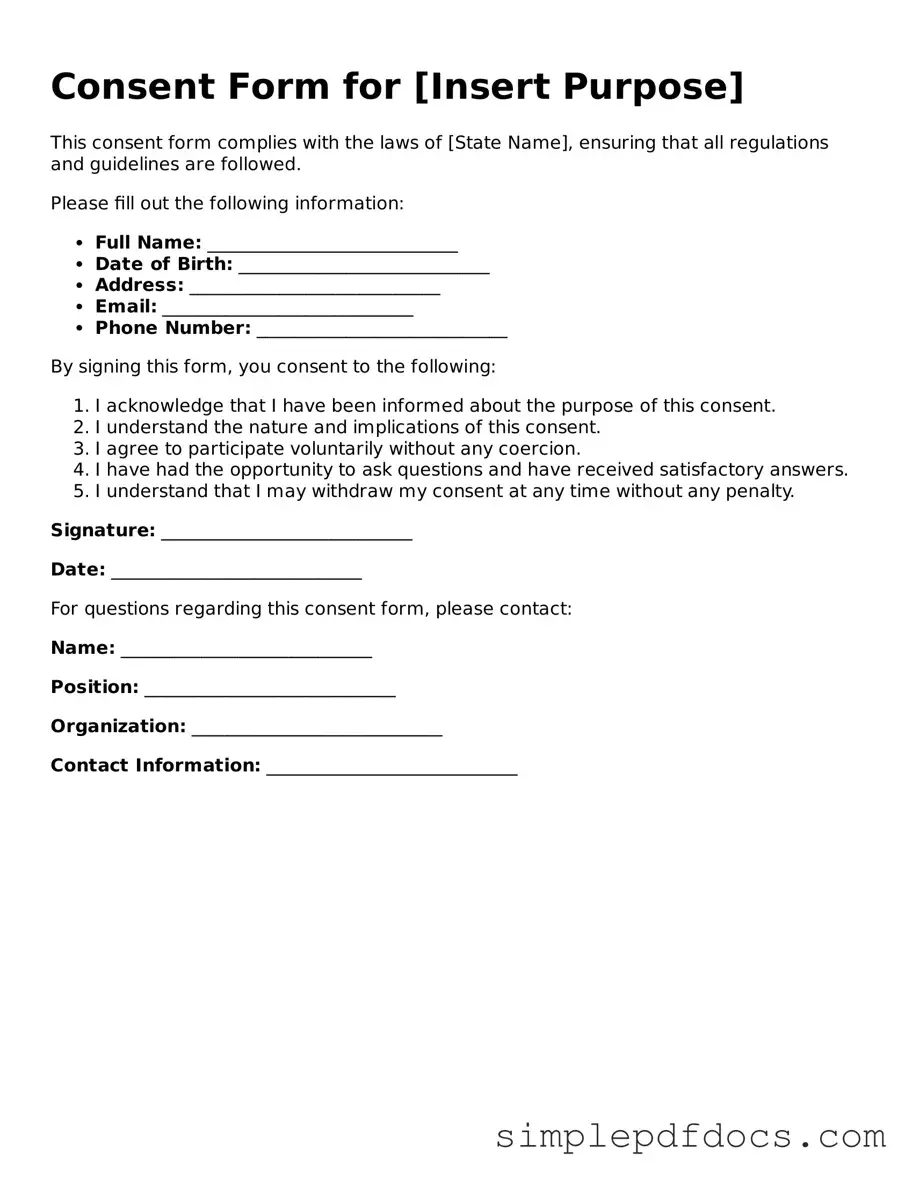Attorney-Approved Consent Form
A consent form is a document that outlines an individual's agreement to participate in a specific activity or to allow certain actions to be taken regarding their personal information or health. It serves as a vital tool in ensuring that individuals are fully informed about what they are consenting to, protecting their rights and autonomy. Understanding the importance and implications of consent forms can empower individuals to make informed decisions in various contexts.
Get Document Here
